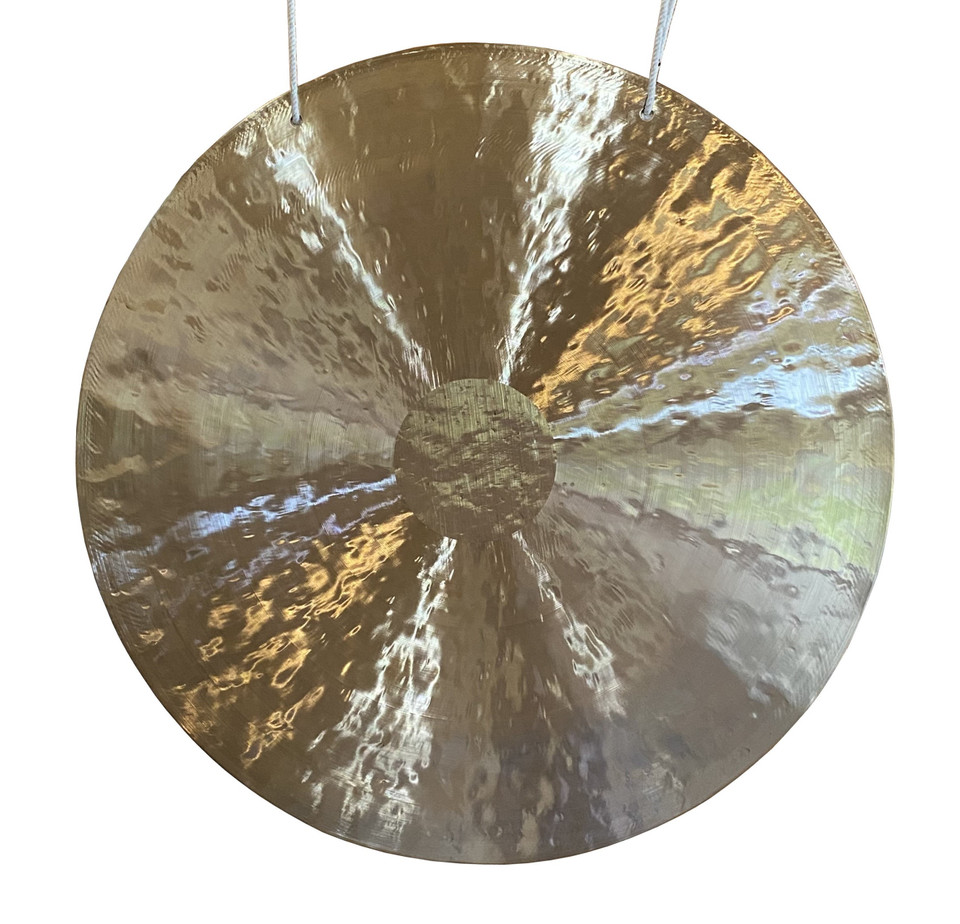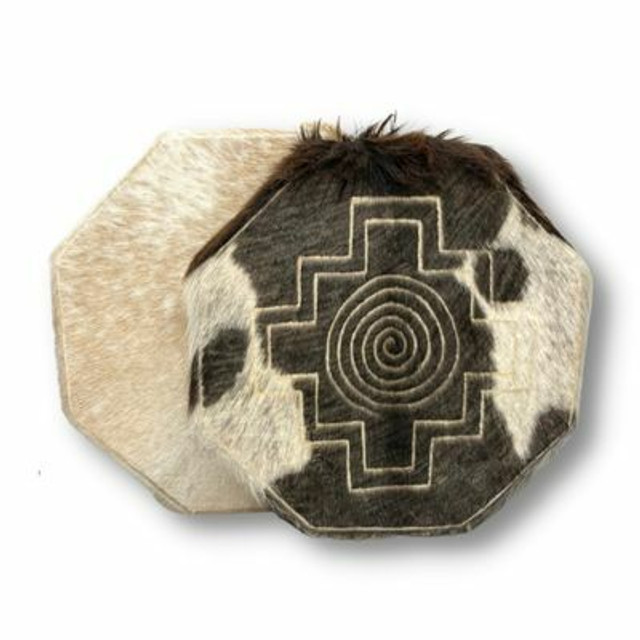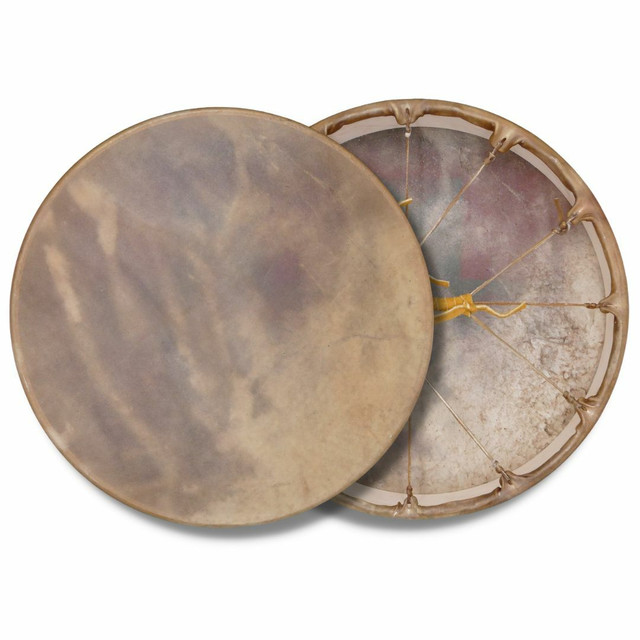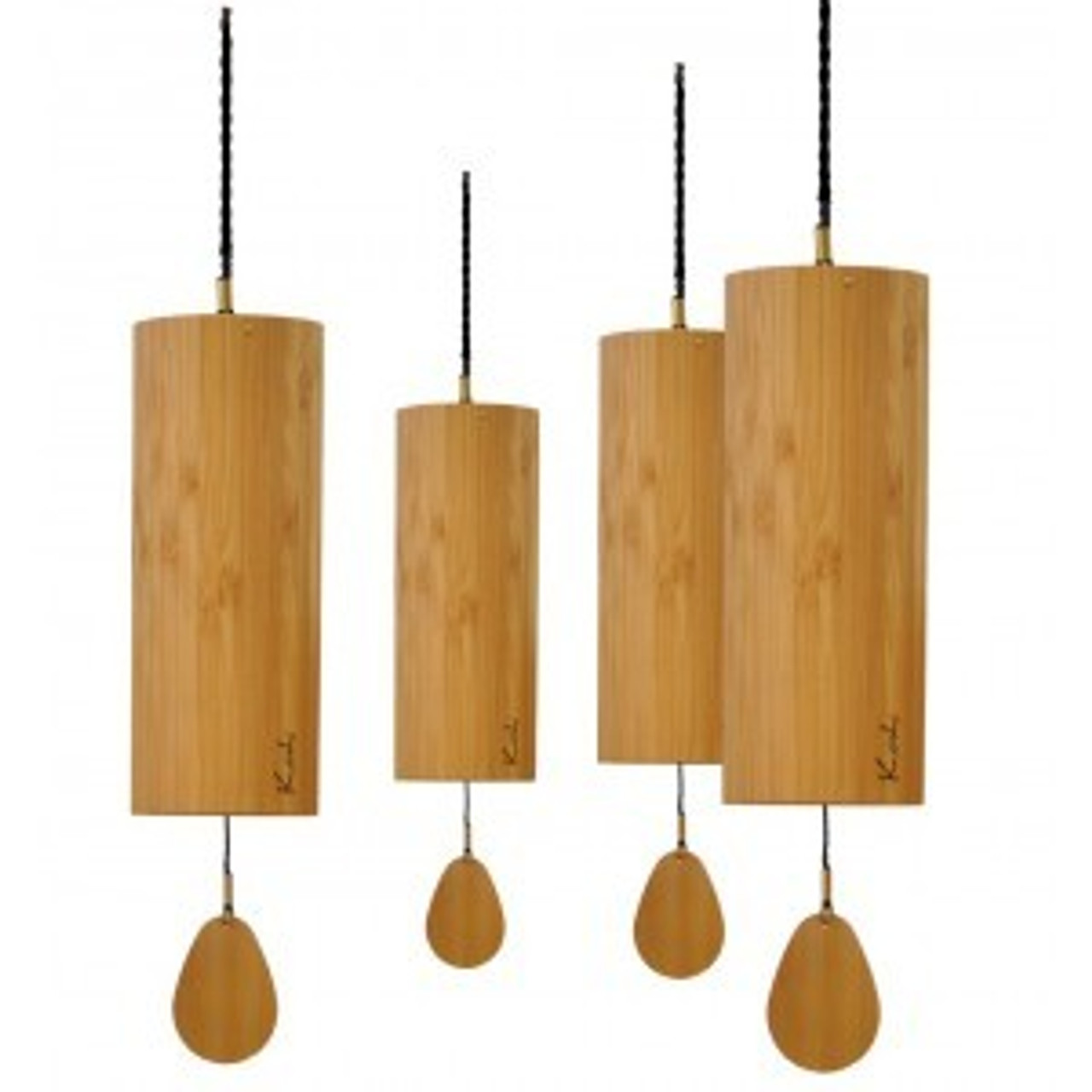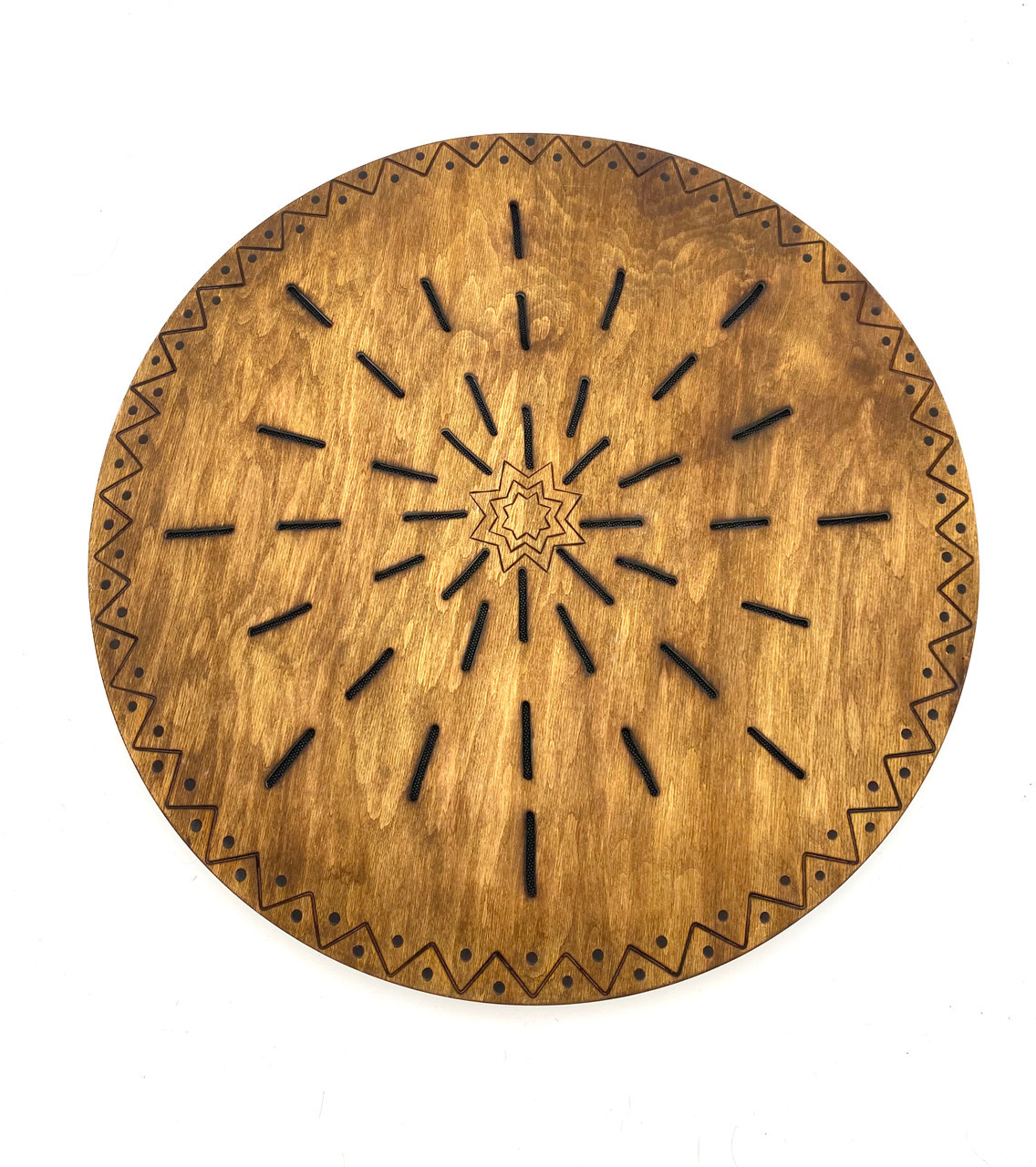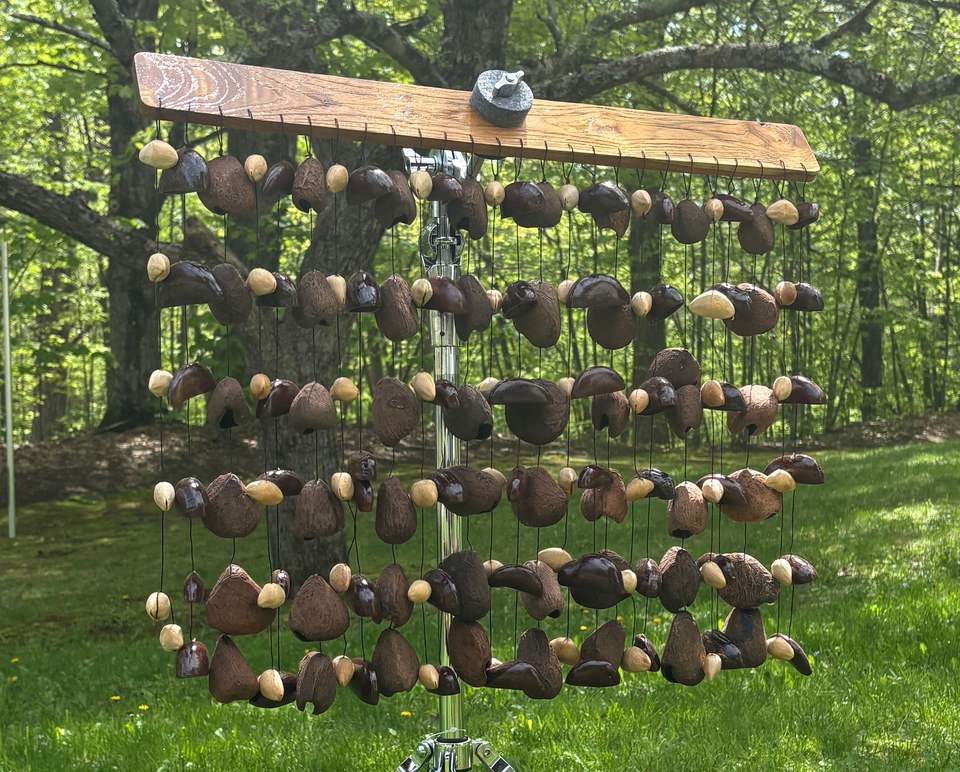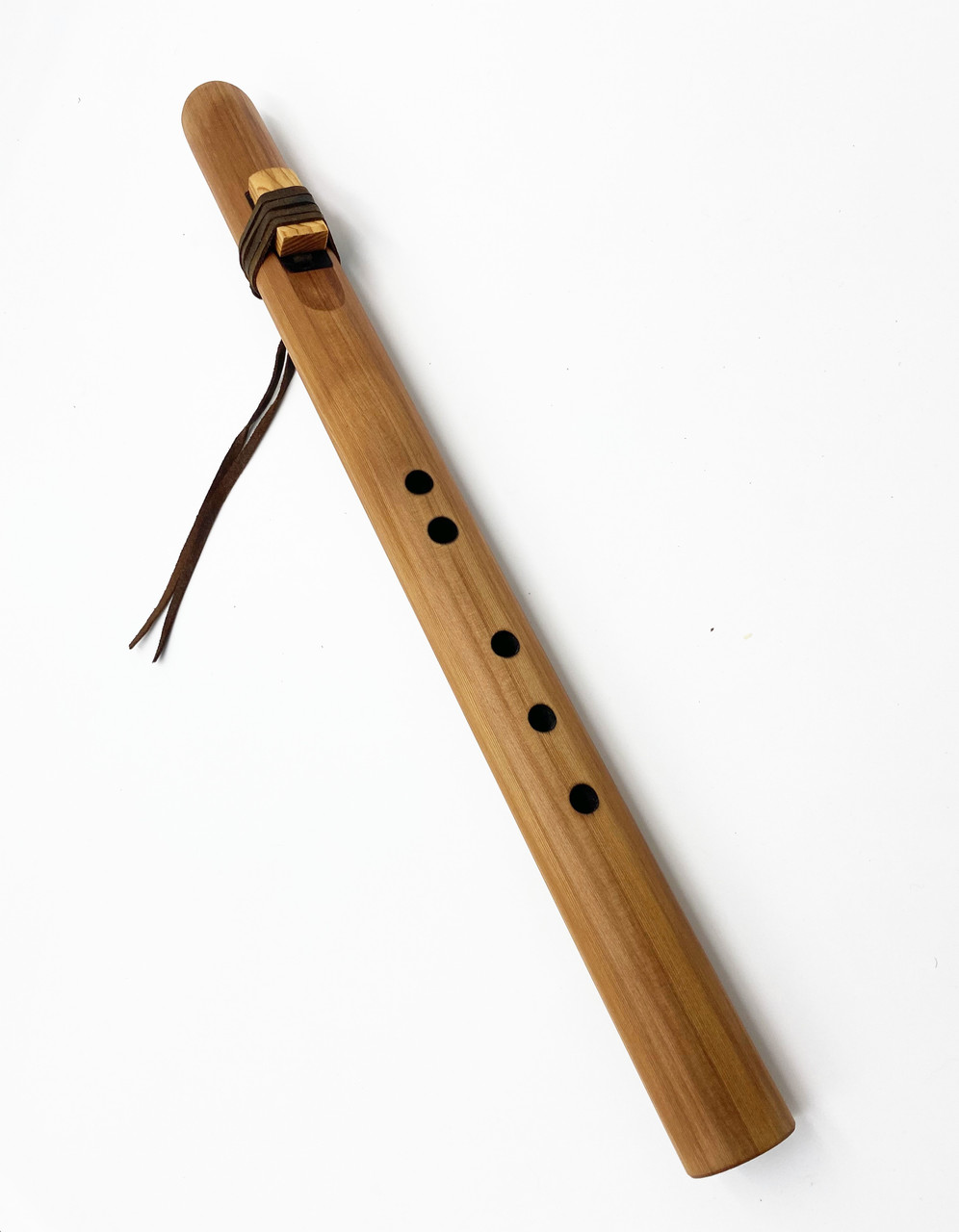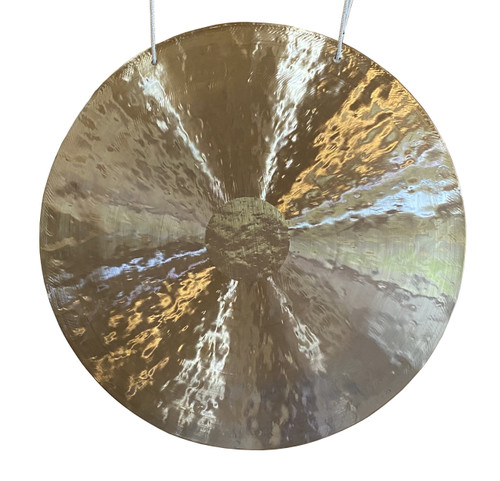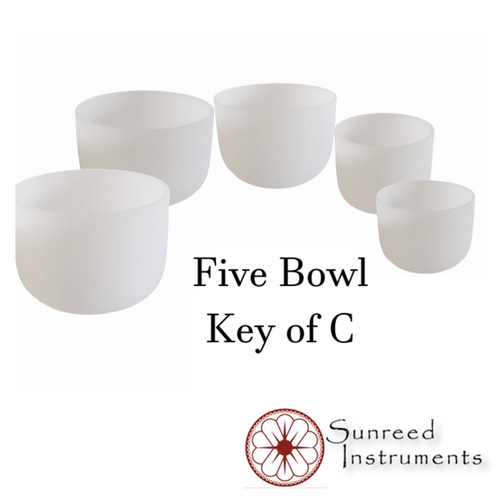
16 INCH WIND GONG
16 Inch Wind Gong
Size: ~16”
When And How Will It Ship: This gong typically will ship out next day with either FedEx or UPS, and arrive within 5-7 business days.
What You’ll Receive: One 16” Wind Gong with classic white cloth striker.
Free Educational Download: Every gong purchase includes a free educational download (downloadable from the order confirmation email), on how to integrate a gong in your therapeutic practice.
Product Description: The wind gong is almost a flat circular plate, though has a slight slope from the middle of the gong to the edge. The wind gong is similar in sound to a chau gong, though the wind gong comes to its crash much faster and harder. When you tap a wind gong, you will get a deeper bass note than a similar sized chau gong. So, you can get a 26” wind gong for example, and get a similar level of bass as a larger chau gong. This is one benefit of the wind gong, to be able to get a low bass note in a smaller size. The bass note will reverberate as a soothing wave of vibration over you. If you hit the gong a little harder, the higher notes of the crash will start to come out fairly quickly. If you hit the gong hard, it will crash right away. The wind gong then is really good for people who are looking for either a low bass note, or working with the crash of the gong more quickly than you would be able to with a chau gong.
At 12”-16” the wind gong is a high-pitched instrument that comes to a quick crash, without a good deal of sustain. A gong at this size is easy to hold in one hand and play, so can be moved around a body in a therapeutic space. It is a simple light weight instrument that can assist well at the beginning or end of a meditation.
At 18”-24” the wind gong is a mid-toned instrument, that can even get to lower toned close to 24”. At these sizes the gong is still fairly lightweight, so it can be held in one hand and played, rather then needing to be played on a stand. So, the gong can be moved and played around a body in a therapeutic space. As well at this size there starts to be more space between the fundamental note and the crash, especially when using a soft mallet, so you can explore different potential sounds between the fundamental and the full crash.
At 26”-28” the wind gong has many of the same characteristics of a 22”-24” wind gong, though now it begins to be low toned instrument even akin to a 30” or 32” chau gong in depth of bass note, especially when using a soft mallet.
Over 30” the wind gong is starting to get really low in tone, with incredible “cosmic” drone sounds that can be really blow you away. Where the chau gong has a more controlled voice, the wind gong tends to be wilder in its delivery of its vibration, roaring a wide range of frequencies at the same time. There is a lot of potential with these gongs with playing the gong in the middle and getting a deep note or playing it along the sides and getting higher expressions. There is also a lot of potential for expressing the low bass notes with good volume, as well as getting the gong to play rather high notes as well. If size is not an issue, a wind gong over 30” will give you a huge range of potential.
Tips For How To Choose A Gong: To choose a gong, consider the following characteristics, weight and quality of sound.
Weight: are you going to be needing to carry this gong, or transport the gong? Gongs that are under 26 inches are generally easier to hold in your hand, and play while holding it. You can then walk around a room holding and playing a gong. In a sound bath for instance, you can play gongs near people, and let them feel the vibration. Gongs over 24 inches are harder to do this with, as they are fairly heavy.
Quality of Sound: the most important quality of a gong is whether or not you like the sound. Listen to the sound files and explore how the gong moves you. Your relationship with the sound will be the most important factor in your working with it. It does not need to be the most expensive gong for you to connect with it’s vibration, and use it to go into coherent states of wellbeing. It can be a inexpensive chau or wind gong, or a highly priced Meinl or Paiste gong, they all work. Please take some time to consider the sound files to find a size and style that works for you.
Generally, as you get larger in size you will get more space between the bass note of the gong and the crash. In a small gong, you can hit it and get a bass note, and then hit it again and it will easily crash. In a large gong, you will hit it once and get the bass note, and then can hit it again and again and uncover more and more sound until you eventually get to the crash. There will be “more to explore” in terms of variety of vibrations coming from the gong, and more complexity in binaurals. As you get larger, you as well get a longer sustain. For example a gong that is 32" or larger will sustain its fundamental for a good deal of time, so you can more get "lost" in the tone, compared to a 18" gong, which will have little sustain.
Another factor to consider, is will the gong sound well with other instruments you are going to be playing with it. One nice benefit of the tuned gongs, such as planetary gongs or the flower of life gongs, is that you will know the hz value the gong will play to, and can buy a gong you will know will match the instruments you have. If you need help in this, we can definitely support you! Just give us a call!









